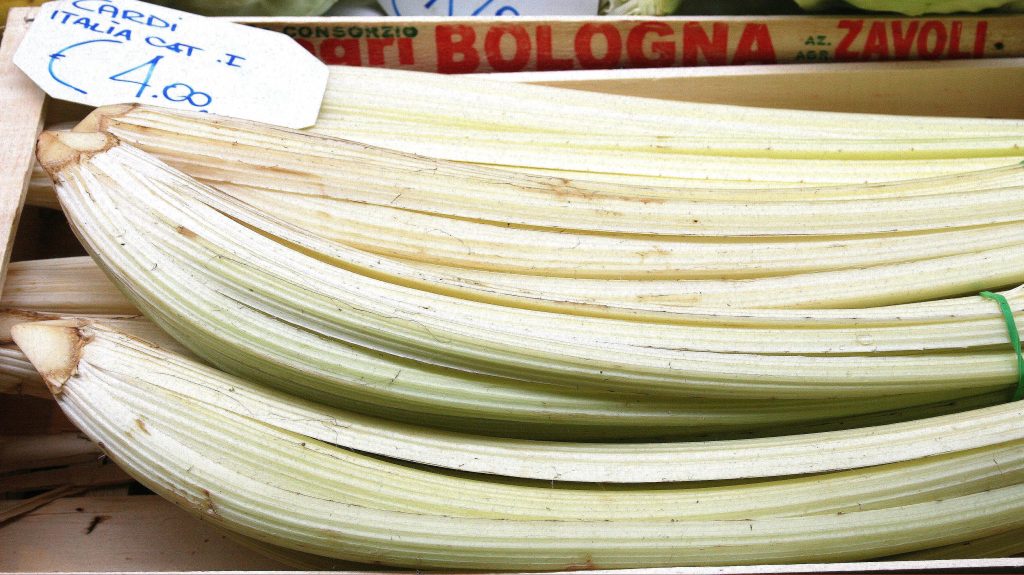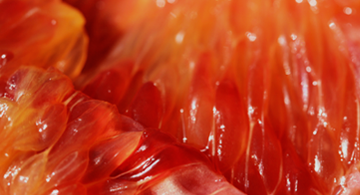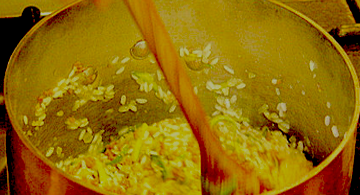
Cardoon, or cardo, is an intriguing plant of great versatility and monetary value. Known as Cynara cardunculus, cardoon currently has more limited production than artichoke, but is received with equal passion at the dining table, sometimes in a form not easily recognizable. Cardoons have a coagulant affect, therefore they are used as a vegetable source of enzymes, vegetable rennet, in cheese production. Research is being conducted using the plant’s seeds as a source of biodiesel. Since this highly invasive plant adapts to dry climates, commercial production should increase substantially in the near future.
The leaf stalks and midribs are usually boiled until tender then served with other vegetables as part of bagna caoda, the Piemontese antipasto, or used in infusions, risotto, savory torta, braised dishes, soups, and sauces. Its delicate flavor is reminiscent of artichoke. In creating your own dishes, these ingredients blend exceptionally well with cardoons: garlic, anchovies, meat broth, white wine, Parmigiano-Reggiano, butter, and olive oil.
Preparing and Boiling Cardoons: Trim well by slicing off the thick tough spines running down the cardoon stalks. Cut into 4-inch (10-cm) sections and immerse in acidulated water to prevent discoloration. (Acidulated water = Squeeze fresh lemon juice into the water and float the lemon in the water.) In a deep pot, bring salted water to a boil. Drain the cardoons then add them to the pot and simmer for 40 to 45 minutes or until tender when they can be pierced easily with a fork. Drain. Serve with plain melted butter or extra-virgin olive oil. Or heat the butter or olive oil first with minced garlic and anchovies to infuse, then toss with the boiled cardoons.







